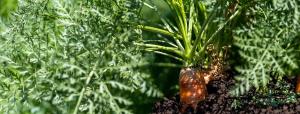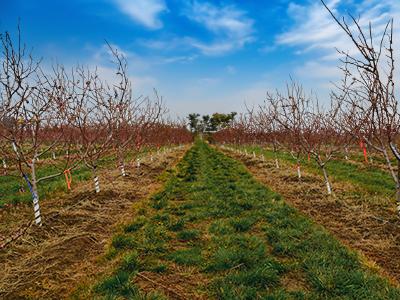
Harvest-Boosting Alliance Innovations: Helping Ontario Farmers Grow More Food
Ontario fruit, vegetable and crop farmers face tough challenges every day, including rising input costs, disease threats and unpredictable weather.
The Ontario Agri-Food Innovation Alliance supports farmers with research-backed solutions that help grow more food, more efficiently.
Here are six ways the Alliance, a collaboration between the University of Guelph, Government of Ontario and its agency Agricultural Research and Innovation Ontario (ARIO), provides yield-boosting solutions.
Published: November 7, 2025

1. Breeding higher-yield varieties
Publicly funded breeding programs, like those funded through the Alliance, lead to new varieties with higher yields than ever. Every seed you plant has more potential.
U of G researchers have created 300 new soybean varieties by using innovative genomic approaches to optimize yield, disease resistance and nutritional traits. In fact, 50 per cent of Ontario-grown, food-grade soybeans are U of G varieties.
Do you represent a commercial entity? Learn more about licensing plant varieties developed at U of G.

2. Extending the growing season
A longer growing season means more time to market your crops. Alliance research has led to the development of fruit varieties that mature later and produce fruit longer. For example:
Day-neutral strawberries that thrive in Ontario’s soils and climate, producing fruit from late May to mid-October and now accounting for 20 per cent of the province’s strawberry production.
Early season peach varieties that help Ontario growers get a jump on imports and avoid late-season weather risks.

3. Long-term trials
Some innovations take time. That’s why researchers run long-term trials at ARIO research centres to see what works to improve yields, increase drought resistance and help maintain yield with fewer inputs, so you can feel confident making decisions for your farm.
For example:
- Adding wheat to a corn-soy rotation and can boost profits by $52 per acre.
Including a small grain cereal like winter wheat helps maintain yields with less nitrogen, especially in dry years.

4. Tackling weeds and diseases
Weeds and diseases can cut into profits. Alliance research helps you maintain yield potential and profit.
Dr. Isabelle Aicklen works with dry bean growers to manage invasive weeds and herbicide resistance.
ARIO research centres provide spaces for the study of new pathogens, like the onion fungus Stemphylium leaf blight.
Together with private and public partners, U of G wheat researchers breed for disease resistance and also for economically critical traits like yield, optimal maturity time, height and structural strength.

5. Fighting pests
Pests like Bt-resistant European corn borer and corn rootworm can cost farmers $100 to $200 per acre in losses. Tested pest management practices help protect yields and cut input costs. Early detection and resistance monitoring help preserve the value of your seed investments.
- Researchers at U of G’s Ridgetown campus are helping Ontario farmers tackle Bt-resistant pests, protecting yields and boosting profitability.
6. Working alongside farmers
The Alliance ensures research knowledge gets to the farm. In 2024/25, more than 300 partners worked with U of G researchers on agri-food and rural projects.
We host events at ARIO research centres, inviting farmers, producer organizations and industry representatives to see innovation in action and share ideas. For example:
- AgRobotics demo days
- Potato research field day
- Pickle brine evaluation
- Cover crop plot tours

